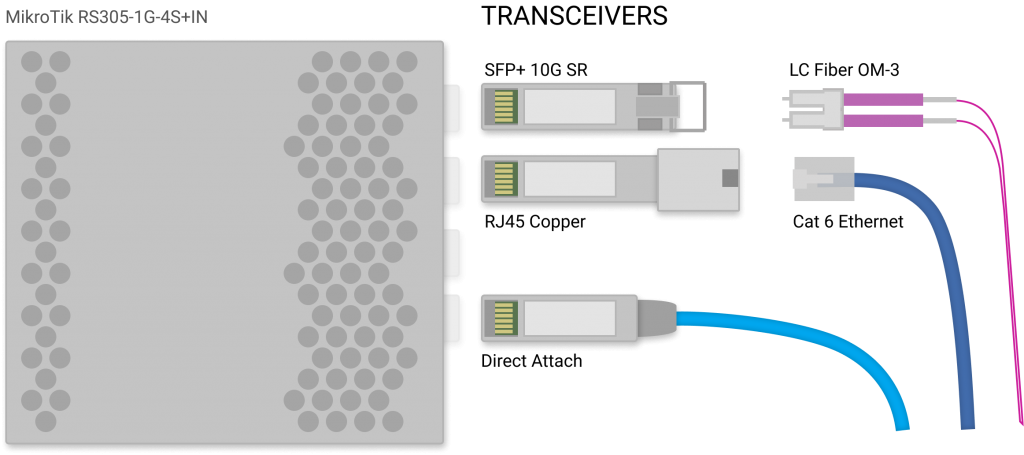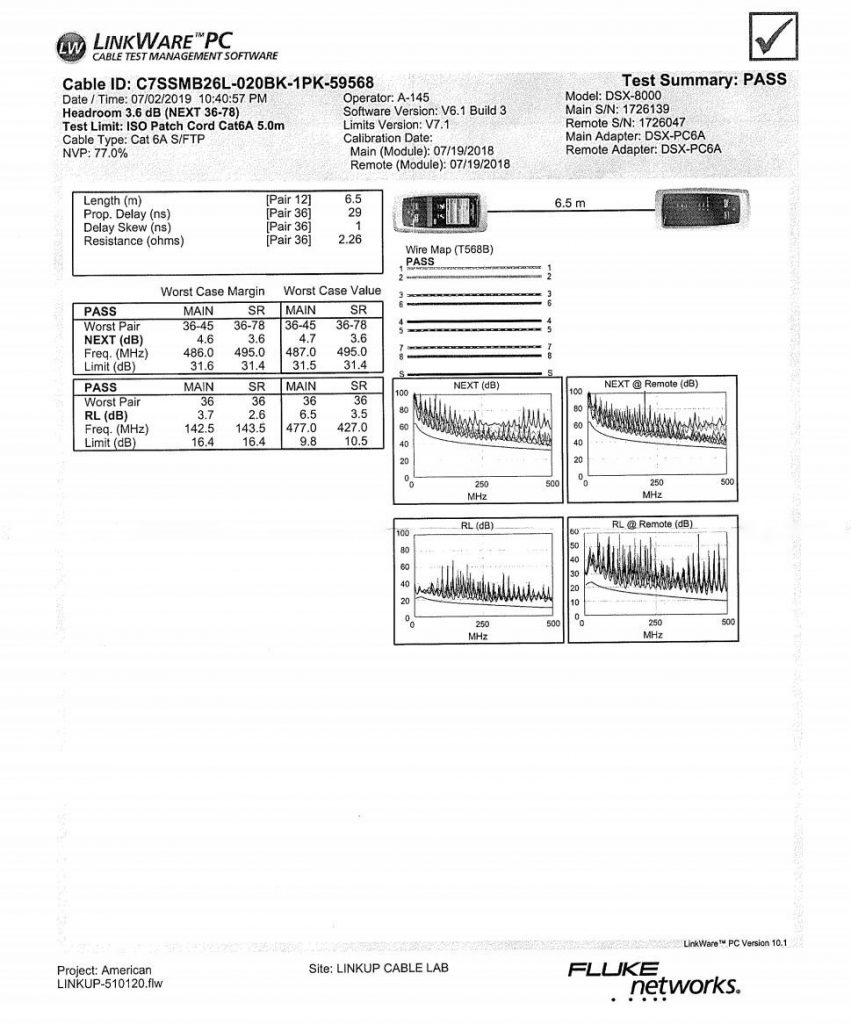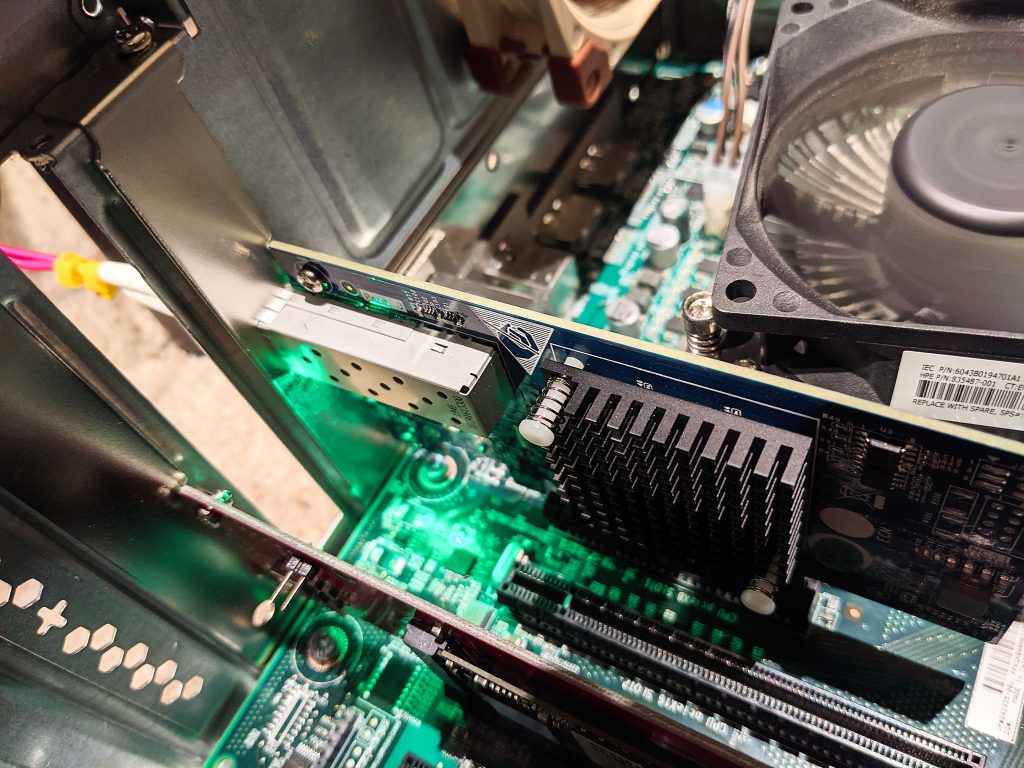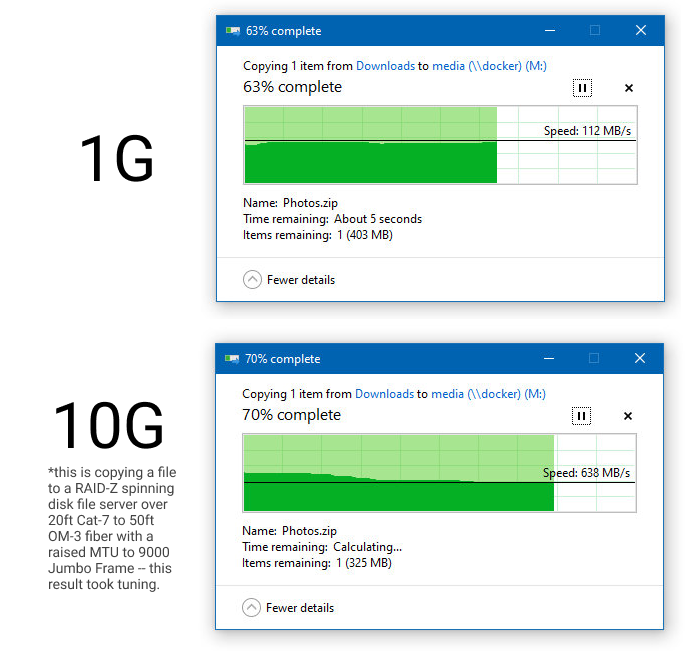Upgrading to 10G Ethernet in 2020
Gigabit Ethernet (1G) came out in 1998 but took years before consumer devices routinely had it and even longer for people to replace their working 100M switches to 1G switches to actually see end-to-end gigabit improvement. Now in 2020, we finally are seeing affordable 10G Ethernet appearing on consumer devices.
The biggest difference you will see with 10G is faster file transfers on your local network. If your computer has an SSD you are probably growing accustomed to speeds around 500MB/s (SATA) or even 2000MB/s (NVMe) but accessing 1G network drives max out just over 100MB/s.
Technically 10gbps (gigabits per second) file transfers should reach 1250MB/s (megabytes per second) but you won’t get close to that speed. There are so many bottlenecks, but you can reasonably expect to double or triple your current transfer speed. And replacing your 1G networks is the first bottleneck that you have to fix before you can chase max 10G speeds.
The 10G screenshot was hard to capture because with fast enough networking, the dialog disappears so quickly… Depending on file size, imagine copying files instantly.
For networks with layers of switches, 10G is also useful because if two 1G users want to transfer files to a core server, the uplink could max out with just 1 user. Using 10G would allow up to 10 slower 1G users to upload at their highest speed. Now it’s no help if those users are all going to a single 1G server, but upgrading your servers and switches first will be a noticeable improvement for your 1G users.
How much will this cost?
If you are just searching for 10G products you will probably run into some very expensive units normally used in data centers. I do not recommend buying any enterprise-grade equipment for home or small-medium businesses. Server room equipment runs loud, hot, and has larger power budgets that you probably don’t care to run.
In 2018, the first wave of newer switches designed for homes came out and they just run warm to the touch without any loud fans and they pulls under 10 watts of power.
The cheapest new solution to connect 2 machines over a short distance at 10G is going to be:
- $355
Now at first glance, you might be set back by the use of SFP (Small Form-factor Pluggable) ports. These are standard use on business level switches because they offer easy port customization and repairability. With SFP you can hot-swap plug-in any transceiver to connect direct-attach, copper, short-range (SR) fiber, or long-range (LR) fiber transceivers.

Which Cable Should I Use?
Now the difficulty of picking which cable to use can be complicated by your individual setup. Honestly you can pick any of these and it will work fine but they all have tradeoffs.
DAC – Direct Attach Cable (up to 5M/16ft)
~$20 total (10Gtek DAC)
If you are looking for the most affordable way to connect computers/servers/switches that are less than 5m or 16ft and have an available SFP+ cage. Without any optical transceivers or conversion to RJ-45, the DAC cables are truly the best value.
RJ45 Copper
~$50 per transceiver, does not include ethernet cable
If you have existing in-wall lines, RJ-45 copper is the way to go but be warned the SFP+ transceivers are expensive ~$50/end and they run HOT compared to DAC or Fiber. Also as more prosumer level devices start getting 10G, like the mac mini or high-end gaming motherboards include only the copper connection option. If you plan to go the copper route and can commit 100% to copper, then look into switches like Netgear GS110EMX, unfortunately, at $250, it only offers two 10G ports with the remaining ports just running 1G.
For long-distance runs, your cable quality and category will be essential. The longer the cable, the more 10G signal degradation you will see lower your real transfer speed. Not all Cat-6 cables are made the same, be careful that the cheapest options often use thinner wires (30awg) or copper cladding with aluminum cores. Cat-6A is an improvement over Cat-6 to help get more 10G range.
What about Cat-7 and Cat-8?
So if you go on Amazon, you can find cables called Cat-7 and Cat-7a which TIA/EIA does not recognize as a standard but ISO did. There are also Cat-8 cables that TIA did approve but not for any long-distance use outside of a network rack (up to 36m/118ft) and ISO still hasn’t approved it. I’m not sure what is happening, but anything over Cat-6a has been a struggle to get universal approval. It doesn’t mean these cables aren’t better, just that you can’t easily compare one cable to another. Ideally, the manufacturers will include or show real-world testing of these cables showing their performance but most don’t. I bought a Cat-7 cable and in the bag with the cable came this printout from a Fluke Linkware test for the highest standard they recognize, a Cat-6a cable.

Cat-5e not spec-ed for 10G, but I’ve tested and found 2-3gbps speeds
Cat-6 can do 30m/100ft at full 10G
Cat-6a can do 100m/328ft at full 10G
Cat-7 can do 100m/328ft at full 10G
Cat-8 can do 30m/100ft at 25G (I can’t find any spec for 10G distance)
It’s questionable if cat-7 is really much different from Cat-6a. A lot of the Cat-7 comes only as STP (shielded twisted pair) which most Cat-6 and Cat-5 have the option of but rarely use. You can tell if a cable is shielded if the RJ45 housing is metal (shielded – STP) or plastic (unshielded – UTP). I am all for shielding to reduce interference, but just something to think about is if you are connecting two distance devices over a shielded cable and they happen to be on two separate circuit breaker boxes, you might be merging the grounds together over this line. If this is true, you should be using optical fiber which will not join the grounds together. Merging grounds is not a bad thing, but you probably don’t want to do it with only the foil lining inside a telecom cable.
Optical Fiber SR (Short Range)
~$20 per transceiver, does not include fiber cable
The most future proof route is to go full fiber and its not as costly as you might think it is. The 850nm SR (short-range – 300m) is the cheapest way to jump in at about $20 per SFP+ transceiver. Down the road, you can switch out just the SFP+ transceiver to a 1310nm LR (long-range – 10km) or 1550nm ER (extended range – 40km) to improve range and speed. The OM-4 cable standard is rated to go all the way up to 100G.
OM-1 can do 33m/108ft of 10G-SR
OM-2 can do 82m/269ft of 10G-SR
OM-3 can do 300m/984ft of 10G-SR, supports up to 40G
OM-4 can do 500m/1640ft of 10G-SR, supports up to 100G
What does a full fiber setup cost?
- $435
- $135 MikroTik 5-Port SFP+ Switch (CRS305-1G-4S+IN)
- Machine A
- Machine B
Another thing to note, the fiber connector you want to get is LC to LC and this can get confusing when buying patch cables. The other connectors like SC and SR are options but they make much more sense in complex patching of 8 devices onto a single multimode trunk fiber.

What about InfiniBand?
You might find very cheap InfiniBand devices on eBay that are in the 8G to 10G ranges and want to give those a try. Unfortunately, they are set up to run enterprise network storage systems like iSCSI and it is not the easiest to use them for ethernet traffic, though there are projects like IPoIB. Also, these cards are designed to run in 1u rack servers with powerful airflow passing over the passive heatsinks of these cards. Your desktop tower might not handle the temperature of these server grade cards.
If you have any questions, please write a comment below. I hope to soon have a post about how to tune 10G to double the performance that the out of box 10G setup gets you.
Other Resources
I stumbled upon this youtube channel after I already wrote this and highly recommend it.

